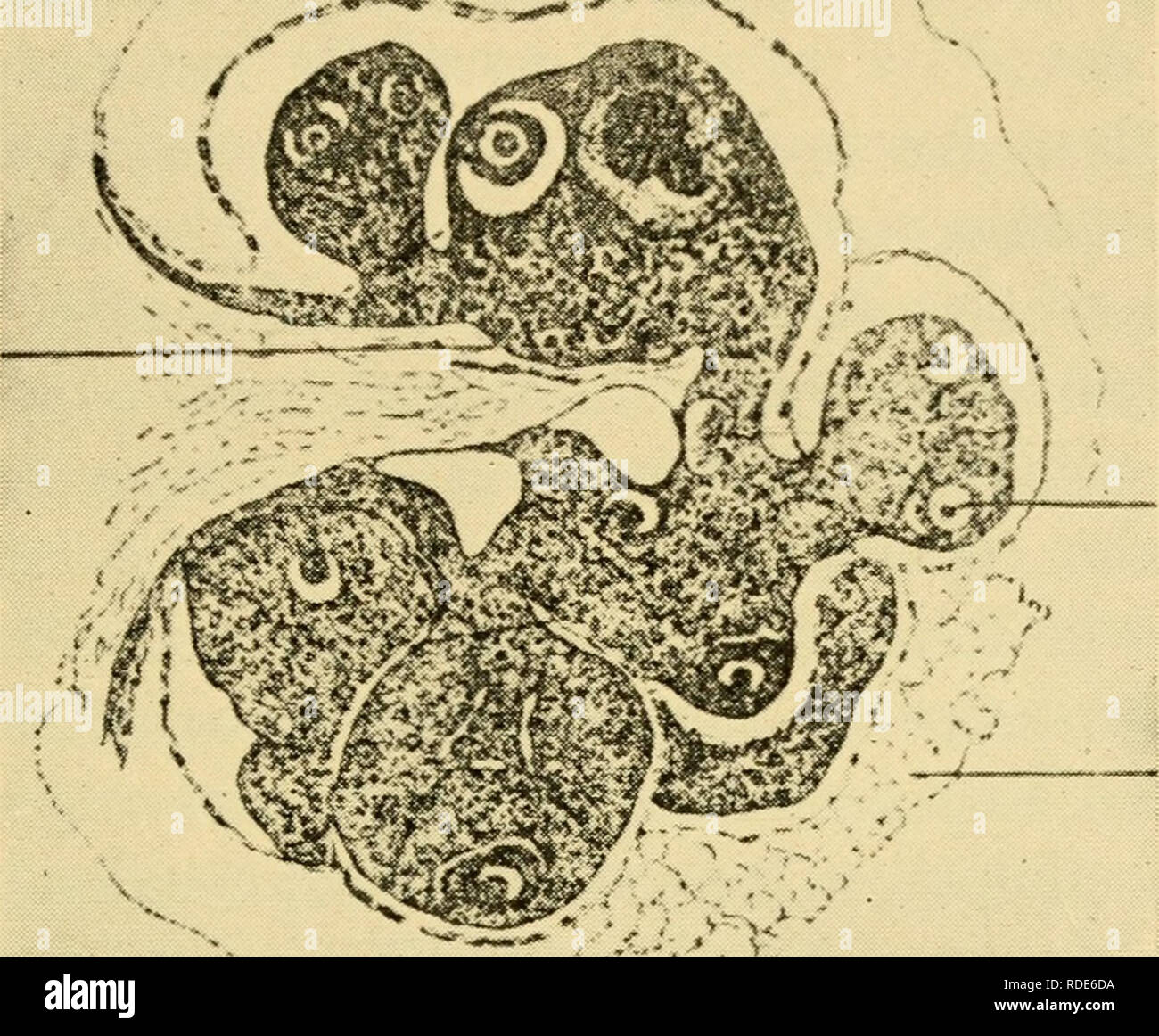. The eggs of mammals. Ovum; Embryology -- Mammals; Mammals -- physiology; Ovum. THE ORIGIN OF THE DEFINITIVE OVA 17 a series of double ovariectomies in the rat, has demonstrated the presumable source of regenerated tissue in animals with apparently completely extirpated ovaries. In an initial series of 105 double ovariectomies she found germ cells at the ovarian site in eight cases, and observed that all eight YF. -».FA Fig. 5. Section through the ovary of mature rat showing the iobed condition. YF, young fol- licle; F, follicle; FA, fatty tissue. (From the Quarterly Review of Biology.) occur

Image details
Contributor:
The Book Worm / Alamy Stock PhotoImage ID:
RDE6DAFile size:
7.1 MB (508.9 KB Compressed download)Releases:
Model - no | Property - noDo I need a release?Dimensions:
1740 x 1436 px | 29.5 x 24.3 cm | 11.6 x 9.6 inches | 150dpiMore information:
This image is a public domain image, which means either that copyright has expired in the image or the copyright holder has waived their copyright. Alamy charges you a fee for access to the high resolution copy of the image.
This image could have imperfections as it’s either historical or reportage.
. The eggs of mammals. Ovum; Embryology -- Mammals; Mammals -- physiology; Ovum. THE ORIGIN OF THE DEFINITIVE OVA 17 a series of double ovariectomies in the rat, has demonstrated the presumable source of regenerated tissue in animals with apparently completely extirpated ovaries. In an initial series of 105 double ovariectomies she found germ cells at the ovarian site in eight cases, and observed that all eight YF. -».FA Fig. 5. Section through the ovary of mature rat showing the iobed condition. YF, young fol- licle; F, follicle; FA, fatty tissue. (From the Quarterly Review of Biology.) occurred in the sixty animals over forty days of age. She noted that in females under forty days of age the ovary is relatively smooth and compact and not very heavily em- bedded in fat (Figure 4), whereas in older animals the ovary is Iobed and surrounded by a la]:ger amount of fat (Figure 5). She accordingly ovariectomized a second set of animals con- sisting of eighty-five females under forty days of age and twenty-three older females. Three of the older animals re- generated germ cells but none of the younger ones did. In several of the positive cases serial sectioning of the removed ovaries gave no detectable indication of lost fragments, but Heys believes that certain narrowly constricted lobes of. Please note that these images are extracted from scanned page images that may have been digitally enhanced for readability - coloration and appearance of these illustrations may not perfectly resemble the original work.. Pincus, Gregory, 1903-1967. New York, The Macmillan Company